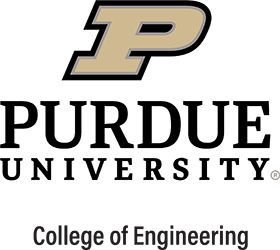Research on Surgical Adhesives Connects to Plans for Leadership
Surgical removal of diseased tissue often requires an additional step—attaching the separated tissue that remains, using sutures or strong adhesives. Only the most reliable sealants will suffice for this process, called anastomosis. A Purdue doctoral candidate wants to use her chemical engineering skills to give practitioners and patients a next-generation alternative. It’s a mechanism that utilizes advanced, sticky proteins well-suited to the internal conditions where surgery took place.

Jessica Torres, now in her third year of the Ph.D. program at Purdue’s Weldon School of Biomedical Engineering, is studying that promising mechanism. Her research to fine-tune the proteins' properties, and then engineer them for particular attachment applications, has received support from a Leslie Bottorff Fellowship.
This support is valuable because Torres must make new connections too, not only through collaboration with Purdue’s resources, but also via inquiries into clinicians' experiences and needs. The translation of lab-based knowledge into hospital outcomes requires her to travel and shadow doctors as they make their rounds and to attend conferences discussing biomedical adhesives. Researchers don’t typically mingle with the practitioners found at these conferences, and the costs of travel are high, so this Bottorff Fellowship recipient gains substantial advantages for a comprehensive education: "Having the money will help me to do so much more."
Torres says this agenda for the next two years is an excellent fit with her entrepreneurial instincts and her commitment to interdisciplinary, hands-on research that "can really benefit patients." The MIT graduate, who pursued a biology minor while earning a B.S. as a chemical engineer, discovered the Purdue laboratory led by Dr. Julie C. Liu, an expert on tissue engineering in the Weldon School of Biomedical Engineering and the Davidson School of Chemical Engineering. This lab’s endeavors with proteins became square one for her Ph.D. pathway, with Liu as faculty advisor.
"I didn't know this protein engineering work was going on," says Torres. "It was everything I wanted-in a project I didn't even know existed."
Her task this year is to further develop the proteins—polypeptide-based materials with certain constituents yielding biocompatible adhesive performance. Approaching that task, Torres wants to learn lessons from hospital visits alongside IU School of Medicine faculty. She plans to consult with Dr. Dimitrios Stefanidis about his experience with hernia surgeries, as well as Dr. Nicole Kissane-Lee about her gastrointestinal and endoscopic cases.
"Talking with the clinicians and knowing where the need is can really help me with the design process," she says. They can tell her where in the body—perhaps at the sites of colon or bowel surgery, or in the lungs—an improvement in adhesion would be especially helpful. Preferences can get specific. Adhesives for some tissues must be customized to be especially stretchable, while tissues elsewhere will demand qualities that withstand contractions.
A second year of research will use engineering principles to fine-tune the proteins' compatibility with the tissue traits clinicians specified, she says. She is also excited about talking with those who have undergone anastomosis so she understands the products she may help to replace. "I really want to know what bothers patients currently. Is it sutures or staples? Are there post-operative complications?"
Torres has reason to take the after-effects of surgery personally. "Part of being Hispanic is an issue with the skin where scarring is really bad when you’re not really very careful with how you stitch people up," she says. "I have three keloid scars, which I might not have if I had been able to use a surgical adhesive instead of sutures." Keloids are raised scars which become bigger than the original wound.
Her proactive, problem-solving spirit also shapes her career plans.
"I would really like to work in a small biotech company that I found myself or join early on and help to build," Torres says. "I really like entrepreneurship—being able to push an idea to exactly where I want it to go." She wants to design not only the product, but the company, as she puts it, explaining that her role model is her mother, who started her own cleaning business.
The Bottorff Fellowship approach to education is "inherently entrepreneurial," she adds. "That's what's so cool about it." She cites connections she has made to relevant resources on campus, such as Purdue Foundry—an organization that has helped students form more than 250 new companies.
Serving others is a key motivation. She is president of the campus organization representing chemical engineering graduate students, and she has volunteered to mentor several Purdue undergraduates as they begin laboratory work. She is considering working with a non-profit organization to boost education for underprivileged students. One helps to prepare future leaders by expanding their ideas through alternative viewpoints, she says.
"It's all about mentorship." The partnership of the Weldon School and IU School of Medicine affirms that maxim, according to Torres. "The Bottorff Fellowship is helping me broaden my perspectives and making me a more effective leader."
The thought-leadership she envisions will apply her engineering and research skills to create visible improvements in healing after surgery. Torres attaches this thought: "The worst thing that can happen to a great idea is for it never to come to fruition."


